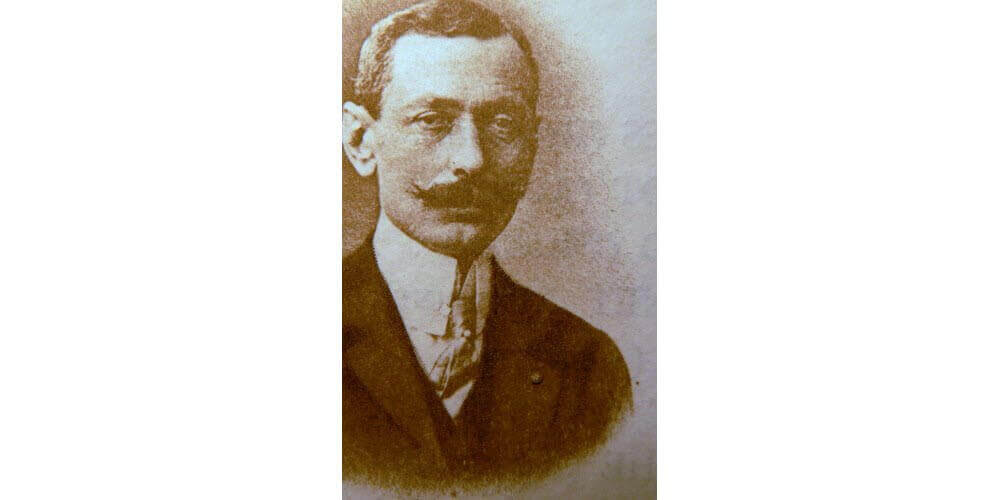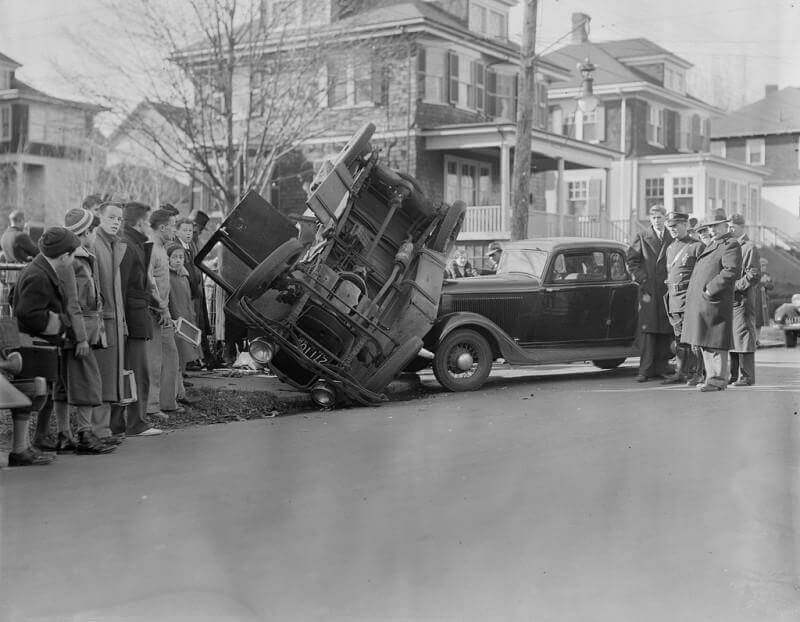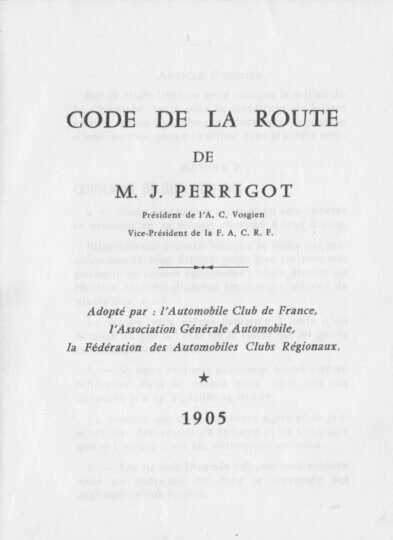Jules Perrigot, inventor of the highway code…
You are no doubt wondering why we are devoting a News item to Jules Perrigot, inventor of the highway code?
For a very simple reason: this illustrious character was the director of Papeteries d’Arches from 1888 to 1936.
Jules Perrigot, a man who left a mark on his time
Jules Perrigot was born on 3 November 1861 in Vimoutiers in Normandy.
Following the deaths of his parents and his elder sister, he decided to leave his native region and move to Paris, where he made many friends and met his future wife. Claire was the daughter of Léon Masure, director and owner of Papeteries d’Arches, who lost his life in a fire in 1897. The pair married on 11 February 1888 in Arches, and the paper mill was Claire’s dowry.
Jules Perrigot found himself at the head of the company at the age of 26, at a time when the company was in difficulties having lost the lucrative contract to print postal stamps. The new director took the situation in hand, concentrating, from 1900 onwards, on the production of banknotes for countries in Europe, Africa, Asia and America. He turned the company’s fortunes around by bringing it into the modern era: he perfected his first vat-paper machine and developed the cylinder mould, which simplified paper-making.
Jules Perrigot had a multitude of other activities as well as running the Arches paper mill. Having set up home in Arches, he became its mayor from 1904 to 1919 and in 1910, thanks to his reputation for sound management, he was made a director of the Vittel water company. A Knight of the Order of the Legion of Honour, holder of a bachelor’s degree in law and an engineering diploma from the École des Arts et Manufactures and a patent engineer, he was also Chairman of the East of France railway company. He also gained a pilot’s licence, invested in horse racing and nurtured a passion for automobiles. He even repaired his own De Dion-Bouton.
“Jules Perrigot, a man of openness and availability, with an inquiring mind, interested in all fields, with an innate need to understand, closely followed by an urgent need to act. Jules, a man of solid, loyal friendships, a man of even character most often, with a certain authority. He was a leader of men. Jules, a man with the faults that ensue from his many fine qualities.” Gisèle Gaudemer.
In 1956, it was his son Étienne who succeeded him at the Arches paper company, which would bring under one roof four of France’s most important paper mills: Arches (Vosges), Johannot (Annonay), Marais (Paris region) and Rives (near Grenoble), to form a new company, ARJOMARI.
Jules Perrigot died on 16 May 1942 in Vevey in Switzerland. He is buried along with his wife in the cemetery in Arches.
Jules Perrigot, inventor of the highway code
At the beginning of the 20th century the automobile industry was growing fast, as was the number of vehicles on the road, but both were completely unregulated. The cars of the day may only have been driving at speed of 30 km/h, but they were no less dangerous for all that. On 24 May 1903, a Paris-Madrid road race caused eight deaths. In 1904, there was one injured road user per year for every 7 cars.
According to Gisèle Gaudemer, who has organised an exhibition on Jules Perrigot, it was an event in his own life that would spur him to draw up a set of good driving rules in 1905, when he was Chairman of the Automobile Club des Vosges:
“Perrigot is an ardent car enthusiast. In 1904, while taking a bend at the top of a hill, he found himself face to face with another car. A head-on collision ensued. This event stuck in his mind and he started to think about the problem it would represent in the future. Car manufacturing was sure to develop, the number of cars on the roads would grow and their performances increase. Then what would we do when we came round a bend, at the top of a hill or not? “
His code, which consisted of ten articles, went on to be adopted by all the automobile clubs and federations in France, who applied it to the 25,000 automobiles and 31,000 motorcycles then on the road.
The code mainly consisted of rules of conduct, since driving well basically meant conducting oneself correctly.
“By scrupulously abiding by the regulations we impose, we will at last be able to set ourselves apart from those that have been branded “roadhogs.”
In the high society that Jules Perrigot belonged to, social condemnation was far worse than the legal penalties. Being expelled from the Automobile Club de France for infringing the code could turn out to be a fate far worse than any fine.
In 1906, he imposed a test known as the “Connaissances” (“The Knowledge”), the forerunner of the driving licence, on all gentlemen’s chauffeurs, and later became commissioner of road-related disputes.
It was only in 1921 that an official regulation was passed entitled “Regulation of the use of public roadways”. The highway code had entered the law.







